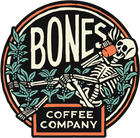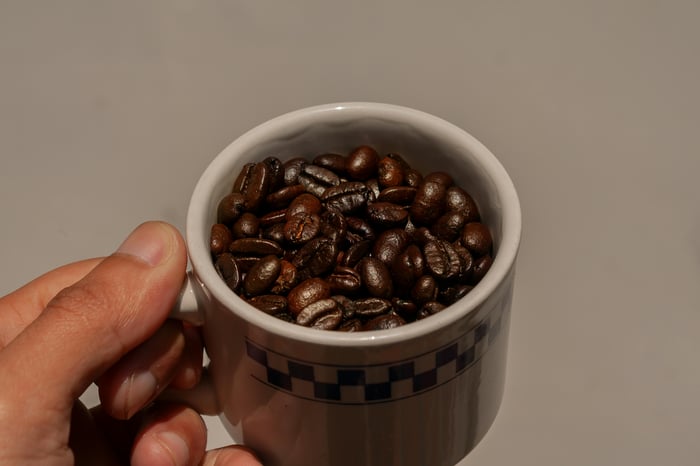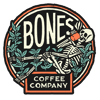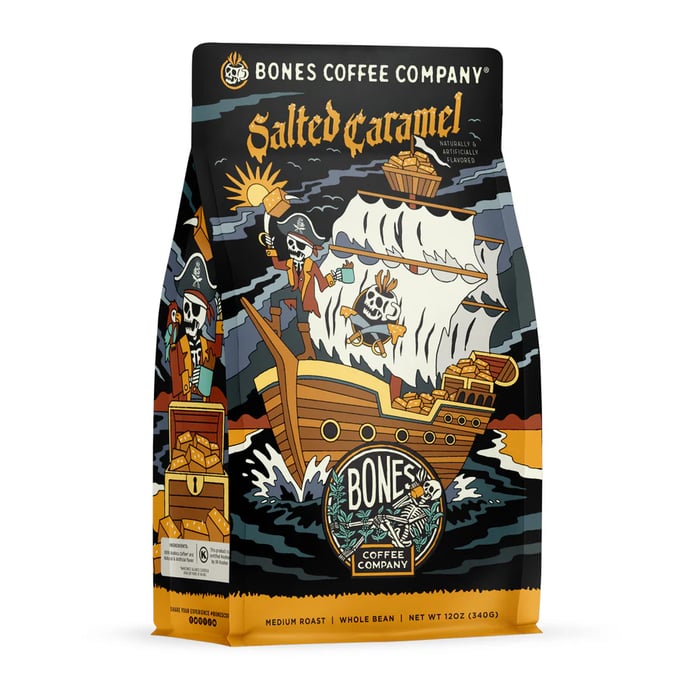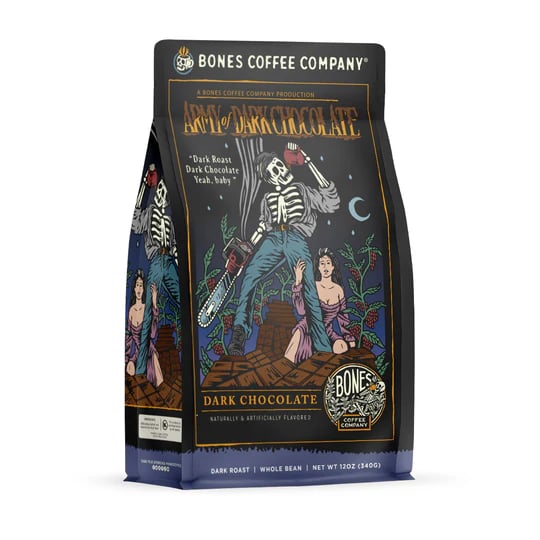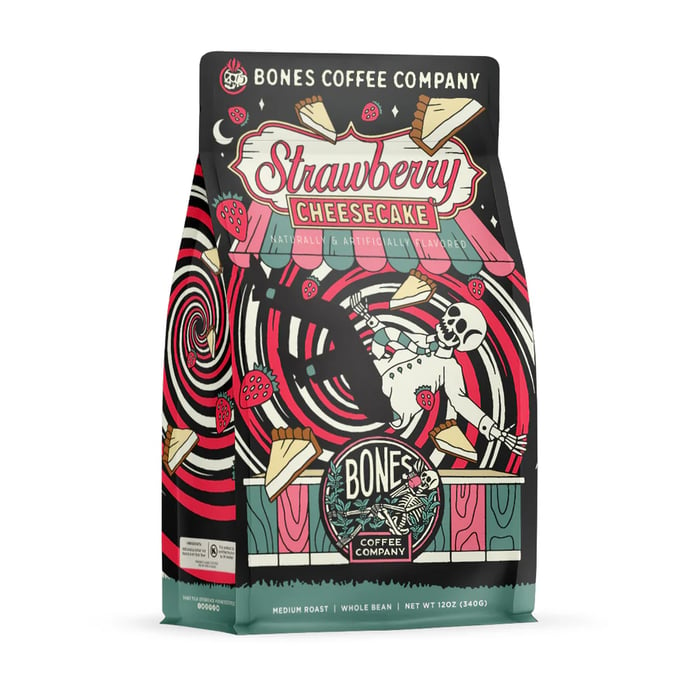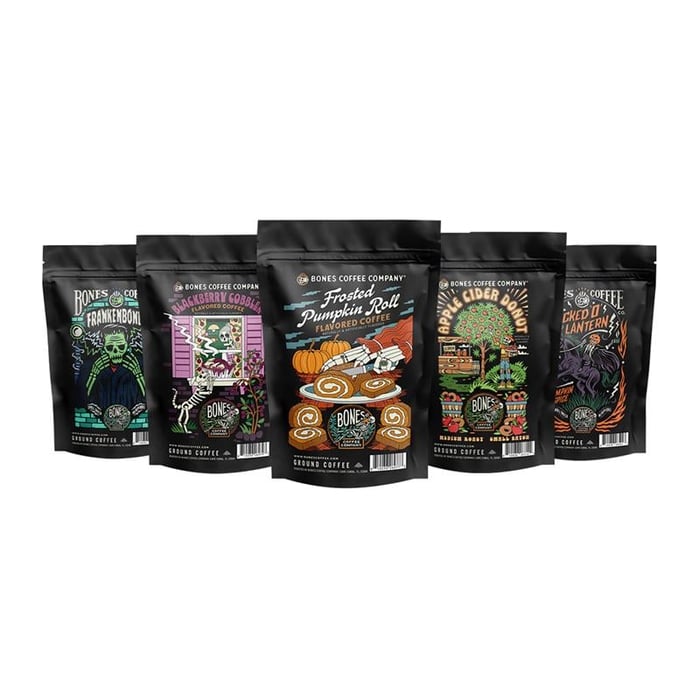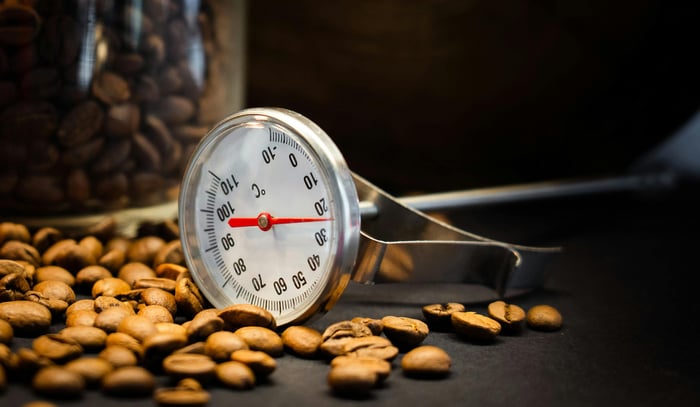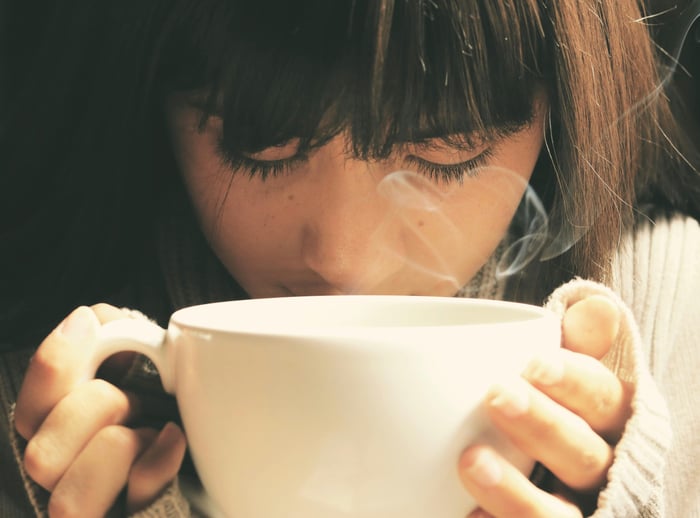Let's clear the air. On most U.S. drip coffee makers, a "cup" means six fluid ounces, not the oversized mug you grab in the morning. Figuring out how many coffee beans you need can feel tricky, since it depends on your roast, grind size, and brew method. But once you know the basics of the coffee-to-water ratio, it's easy to brew a consistently great cup at home.
Coffee beans aren’t perfect little clones. They vary in size and density based on variety and roast level. That wiggle room keeps the brewed coffee perfectly balanced without forcing you to use a jeweler’s scale before you’ve had your first sip. This is the hallmark of well-made brewed coffee.
Key Insight:Your baseline is simple. About 40 medium-roast Arabica beans for a standard 6-oz coffee maker cup (that’s one cup and a handy coffee per cup rule of thumb). This simple rule is the perfect starting point for dialing in your perfect brew. |
How Many Coffee Grams, Tablespoons, or Coffee Scoops Per Cup?
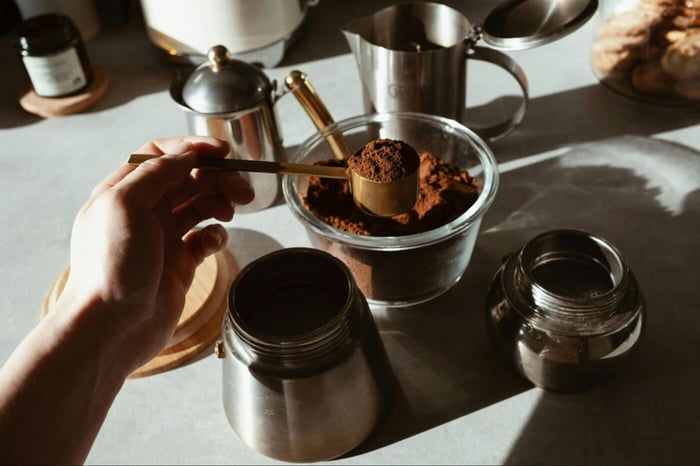
For consistent flavor, a simple kitchen scale is the most accurate tool. But if you’re Team Tablespoon, this side-by-side cheat sheet shows exactly how many coffee beans or scoops you’ll need for your morning brew.
Measure (for 6 fl oz water) | Whole Bean Count | Weight (grams of coffee) | Tbsp (level) | Standard Coffee Scoop* |
|---|---|---|---|---|
Light Roast | 42–45 | 11–12 g | 2¼ | Heaping 1 |
Medium Roast (norm) | 38–42 | 10–11 g | 2 | Level 1(one coffee scoop) |
Dark Roast | 35–38 | 9–10 g | 1¾ | Scant 1 |
To hit the golden cup standard (often called the golden ratio), you’ll need about 10–11 grams of beans for that six-ounce pour. This translates to roughly 40 medium-roast Arabica beans.
*Heads up: Most coffee scoops hold about 10g of coffee, but this can vary (roughly two scoops of coffee per 12 fl oz mug). A scale ensures consistent results.
Does Roast Level Change the Bean Count?
Absolutely! Roasting changes a bean's density. Dark roast beans lose more moisture, making them lighter and slightly smaller. This means you need fewer coffee beans by count to hit your target weight. Light roasts are denser, so you’ll need a few more.
- Dark Roast: 35–38 beans
- Medium Roast: 38–42 coffee beans
- Light Roast: 42–45 beans
Handling whole beans this much? Some coffee lovers skip brewing entirely and eat roasted coffee beans directly for an intense caffeine boost. It's safe in moderation but delivers 2-3x the caffeine per serving. Learn more about eating coffee beans safely before you buy them.
Do Different Coffee Bean Varieties Brew Stronger?
Yes. The two big players on the world stage, Arabica and Robusta, bring different things to the mug:
- Arabica: smoother, aromatic, lower caffeine, lighter body.
- Robusta: Bolder, earthier, nearly twice the caffeine, denser coffee beans.
Bones Coffee Company uses high-quality Arabica coffee beans as the base of our creative flavors and unique blends, including our mushroom coffee. From Cinnamon Roll Flavored Coffee to Strawberries & Cream, Arabica provides the perfect canvas for fun, bold, and functional coffee experiences.
Coffee-to-Water Ratio Chart for Popular Brew Methods
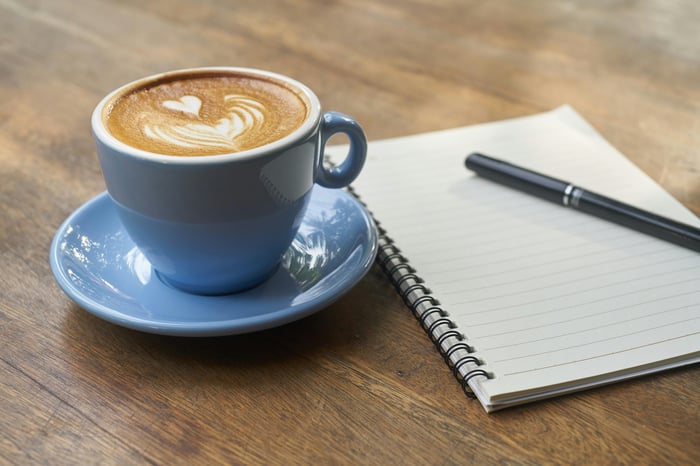
Ready to make a stronger brew? This chart is your ticket to a perfect cup, no matter how you make it. From learning how to make pour-over coffee to perfecting cold brew coffee, tack it on your fridge and thank us later. It works across many brewing methods.
Brew Method | Beans (count) | Weight (g) | Tbsp | Water | Notes |
|---|---|---|---|---|---|
Drip Maker (6 fl oz) | 38–42 | 10–11 | 2 | 180 mL / 6 fl oz | Standard “cup” size |
Pour-Over (12 fl oz mug) | 76–84 | 20–22 | 4 | 360 mL / 12 fl oz | Bloom 30 sec |
French Press (32 fl oz) | 190–200 | 50–54 | 10 | 950 mL / 32 fl oz | 4-min steep |
AeroPress (8 fl oz) | 34–38 | 9–10 | 1 ¾ | 240 mL / 8 fl oz | Invert for bold |
Cold Brew Concentrate (1 qt) | 320–340 | 85–90 | 17–18 | 946 mL / 32 fl oz | Steep 12–18 h; dilute 1:1 |
Espresso Double Shot | 68–72 | 18–20 | N/A | 60 mL / 2 fl oz | 25–30 sec pull |
Too Weak? Too Strong? Here's How to Fix It.
Even the best brewers have an off day. If your coffee isn’t hitting the mark, a small tweak to your coffee-to-water ratio can make all the difference (coffee strength). Here’s how to troubleshoot your brew.
Symptom | Fast Fix | Why It Works |
|---|---|---|
Watery brew | Add 5 coffee beans or ½ Tbsp next round | Boosts the coffee-to-water ratio for more flavor. |
Bitter or sludgy | Remove 5 coffee beans or use a coarser grind | Reduces over-extraction by giving water less to grab onto. |
Sour taste | Use a finer grind and add 15 sec to the brew time | Increases extraction to balance out acidic notes. |
Espresso channeling | Distribute ground coffee beans evenly and tamp level | Prevents water from finding a "fast lane" through the puck. |
Cold brew is dull | Extend steep time to 18 h or use 10 g more coffee | Gives the water more time or more coffee to pull flavor from. |
Flavor Experiments: Dial In with Bones Coffee
Brewing ratios don't have to be boring. With over 30 flavored coffees, Bones Coffee turns your kitchen into a lab.
- Craving dessert in a mug? Our White Chocolate Strawberry Flavored Coffee is a creamy, dreamy escape.
- Need that coffee-shop-pastry vibe? Try our iconic Cinnamon Roll Flavored Coffee.
- Can’t decide? Create your own adventure with our Coffee Sampler Packs and mix four 4-oz bags!
Choose from 12-oz bags, 4-oz samples, or Keurig-compatible coffee pods.
Plus, enjoy free U.S. shipping on orders over $75.
Pro Tip: Experiment with your brew ratio. Bolder flavors can handle a stronger brew, while delicate notes shine with precision. |
Frequently Asked Questions
How many tablespoons or grams for 8 fl oz?
About 50-56 medium-roast coffee beans, 13–14 grams of coffee, or 2 ⅔ level tablespoons of ground coffee, is a helpful guide to coffee per cup.
Is it better to weigh coffee beans before grinding with a coffee scale?
Yes. Weighing ensures accuracy and repeatable flavor.
Can I reuse coffee grounds?
No. Reused coffee grounds brew flat, bitter, strong coffee. Compact them instead.
What grind size matches each brew method?
Coarse = French press, cold brew. Medium = drip, pour-over. Fine = AeroPress, Moka. Extra-fine = espresso
How many grams are in a pound of coffee?
Roughly 3,000–3,500 coffee beans, depending on bean type and roast.
Your Perfect Cup, Bean by Bean
When in doubt, remember the magic numbers: about 40 whole coffee beans, 10–11 coffee grams, or approximately two tablespoons per cup for a standard six-ounce cup, essentially how much coffee you need for a small brewer, and a reminder for coffee-to-water ratio.
Start with that golden ratio, then tweak it until your ideal cup tastes like victory using coffee scoops or a kitchen scale.
When you’re ready to turn those perfect ratios into a flavor explosion, explore the wild world of Bones Coffee Company, because your daily ritual should be anything but boring.
